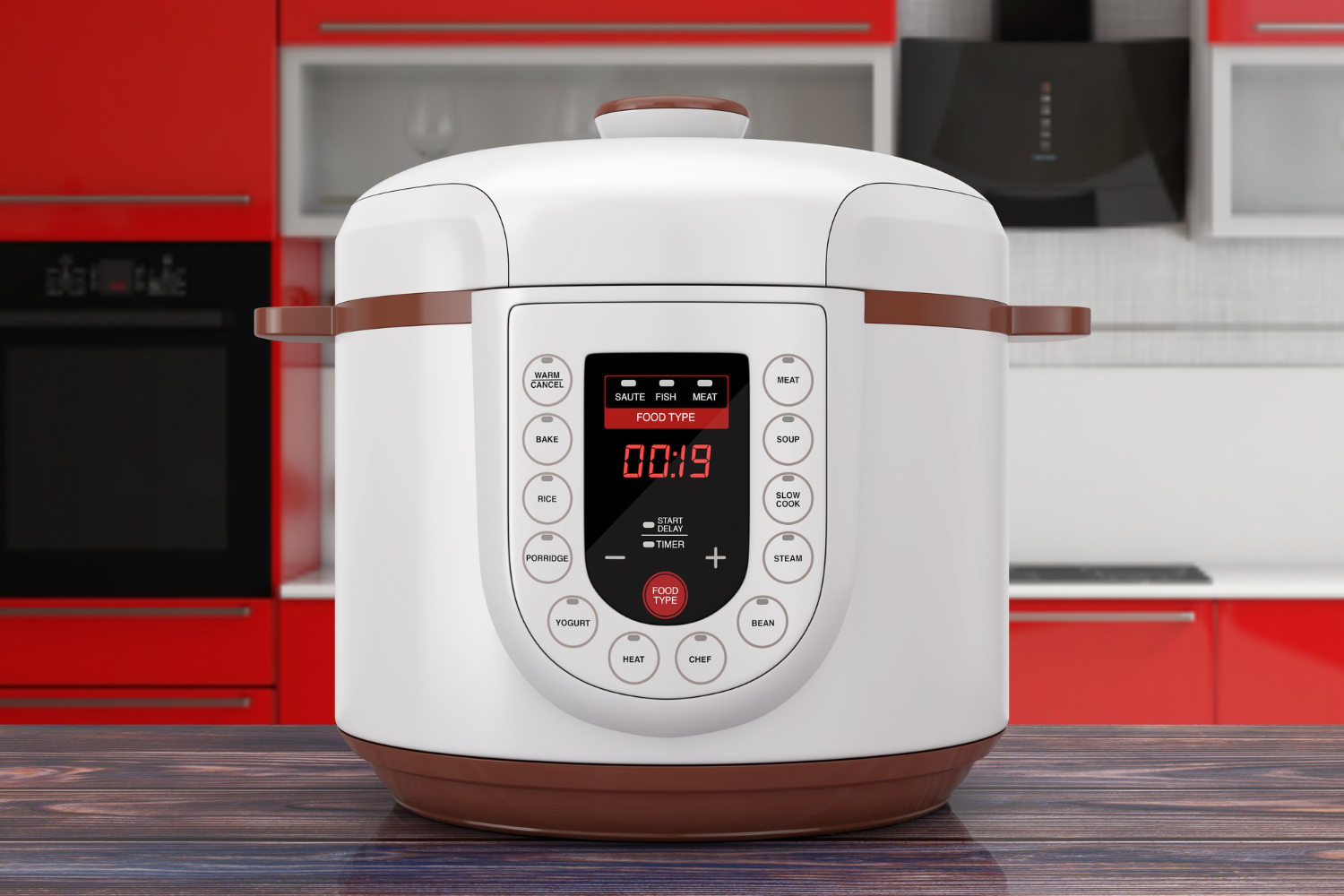Next to the cast-iron skillet, the grill, and the wok, the pressure cooker occupies the next rung of cookware greatness in any kitchen. But, unfortunately, the old-style aluminum pressure cooker that works primarily with gas hobs is a thing of the past. Well, you can still buy them, but we don’t recommend them. Instead, you now have the option of purchasing something better – an electric pressure cooker.
First, let’s talk about kitchen safety. Conventional pressure cookers can sometimes fail. The silicone ring/gasket may stay relatively intact, but when the material is pinched, that can send your pressure cooker flying from the hob and onto the floor.
That’s the least harmful scenario. However, if the lid somehow pops during cooking, you’re looking at a destructive wave of pressure and hot water everywhere. Imagine standing next to the p[pressure cooker while this happens.
It’s a different scenario with electric pressure cookers. Electric pressure cookers are governed by an IC (integrated circuit) that controls and monitors everything from the voltage, wattage, cooking temperature to how many PSI the electric pressure cooker is packing.
You have more eyes and hands working while using an electric pressure cooker than a conventional gas hob pressure cooker.
When something is amiss, the safety mechanisms of the electric pressure cooker will kick in and prevents a kitchen catastrophe. There are other benefits, too:
- Nothing can be quicker – It reduces cooking time by a third (or more). For example, a large roast that usually needs around three hours of cooking will be perfectly tender in just 20-40 minutes. Tougher vegetables like chickpeas can be ready in just thirteen minutes. Cooking is stressful; you don’t need to spend more time in the hot kitchen.
- Healthy cooking galore – Up to 50% of the valuable nutrients in food are retained when you cook with a pressure cooker. Pressure cooking doesn’t take as much time, and we all know that the longer food is exposed to heat, the more the nutrients leach out are outright destroyed.
You can compare the benefits of pressure cooking to steaming or using the microwave oven for short bursts of cooking. - Save on power and gas – Pressure cookers (especially electric pressure cookers) can help you save over 70% of the equivalent of what you use when you fire up a gas hob. In addition, because of how they were designed, electric pressure cookers are more energy-efficient than the poster appliance of the current era – LED bulbs.
- Easy and almost lazy cooking – You only literally have to add water to get going. Pressure cooking is similar to ordinary cooking, except it always requires a small amount of water and requires far less time than usual.
Once you understand how your pressure cooker works, you’ll only need to monitor it when it’s getting up to the right level of pressure. When using an electric pressure cooker, the preset modes allow you to set the range and leave it. - Keep the kitchen clean – Forget about painful oil splatters and hot liquid spurts. When you cook in a sealed container, you don’t have to worry about those things anymore.
What Size Electric Pressure Cooker Should I Buy?
Unless you are processing food on a large scale, a five-liter or six-liter electric pressure cooker would be a good idea. However, even small families do well with electric pressure cookers with lower capacities.
The main advantage of having a smaller pressure cooker at home is the unit is easier to clean and maintain. The electric pressure cooker won’t be that heavy, either.
Also, we recommend buying the newest model available. This has less to do with social status, but that older model may be harder to fix. You’d want to have spare parts for your electric pressure cooker should it break at one point.
If you like cooking higher quantities of food, then the eight-liter or ten-liter model might be a better choice.
The bigger the capacity of the electric pressure cooker, the more water it needs. So, typically speaking, the longer it will take before the electric pressure cooker reaches its peak temperature. The peak temperature is required before the compression occurs, and the electric pressure cooker starts regulating the pressure inside to tenderize the food.
What Is a Standard Size Pressure Cooker?
The standard size for electric pressure cookers is 5-6 liters. There are more minor variants for people who live alone – these should be in the 2–4-liter range. We do not recommend buying anything too small, since 4 liters is quite near 5 or 6 liters. Go for the standard size, so you have more space to cook when you have guests over. If you buy a new electric pressure cooker for a large family with six or more members, the ideal capacity is 7-10 liters. These are huge, but at the same time, you can cook as much food as is needed even during the holidays with minimal effort. This is what we are after, anyway.
Can You Cook Small Meals in A Large Pressure Cooker?
Definitely! Some people are fearful that a large pressure cooker would only work when it is packed with food. You can tenderize any amount of meat using a pressure cooker.
However, you still have to follow the manufacturer’s recommendations regarding how much water you should put in the pressure cooker before turning up the heat.
Pressure cookers, even the old-style ones that work only on gas hobs, have a minimum and ideal water level. If you fall under the recommended level, the food might burn.
If there is too much water, water will likely escape through the overload conduit on top of the pressure cooker. The same goes for electric pressure cookers. If there is too much water, then water will spill out of the vent on top. The water has to go somewhere, and no system is entirely water-proof.

